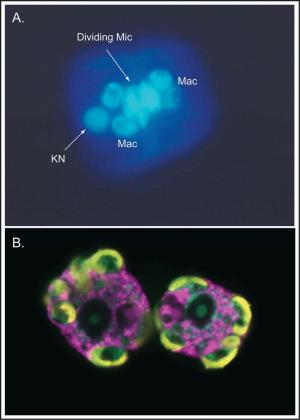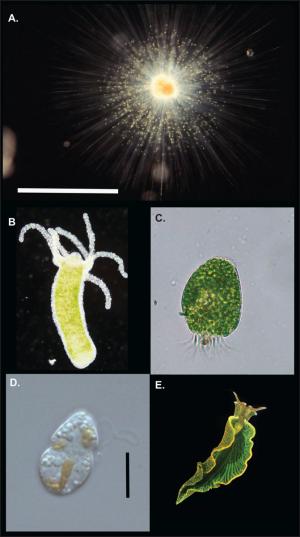Publications
Journal Articles
Johnson MD (2014) Inducible mixotrophy in the dinoflagellate Prorocentrum minimum. J Euk Microbiol. oi: 10.1111/jeu.12198. [Epub ahead of print]
Keeling, PJ, et al. (2014) The marine microbial eukaryotic transcriptome sequencing project (MMETSP): illuminating the functional diversity of eukaryotic life in the oceans through transcriptome sequencing. PLOS Biology. 12(6): e1001889
Hansen PJ, Nielson LT, Johnson MD*, Berge T, Flynn KR (2013) Acquired phototrophy in Mesodinium and Dinophysis- a review of cellular organization, prey selectivity, nutrient uptake and bioenergetics. Harmful Algae. 28: 126-139
Johnson MD, Stoecker DK, Marshall, HG (2013) Seasonal dynamics of Mesodinium rubrum in Chesapeake Bay. J Plank Res. 35: 877-893
Johnson MD (2011b) Acquired phototrophy in ciliates: a review of cellular interactions and structural adaptations. JEM doi: 10.1111/j.1550-7408.2011.00545.x
Moeller, HV, Johnson, MD, Falkowski, PG (2011) Photoacclimation in the phototrophic marine ciliate, Mesodinium rubrum (Ciliophora). J Phycol 47(2): 324-332
Johnson MD (2011a) The acquisition of phototrophy: adaptive strategies of hosting endosymbionts and organelles. Photosynth Res 107: 117-132
Stoecker DK, Johnson MD, de Vargas C, Not, F (2009) Acquired phototrophy in aquatic protists. Aquat Microb Ecol. 57: 279-310
Johnson MD, Volker J, Moeller HV, Laws E, Breslauer KJ, Falkowski PG (2009) Universal constant for heat production in protists. PNAS 106: 6696-6699
Johnson MD, Oldach D, Delwiche, CF, Stoecker DK, (2007) Retention of transcriptionally active cryptophyte nuclei by the ciliate Myrionecta rubra. Nature 445: 426-428
Johnson MD, Stoecker DK, Tengs T, Oldach D (2006) Sequestration and performance of cryptophyte plastids in Myrionecta rubra. J Phycol 42: 1236-1246
Johnson MD, Stoecker DK (2005) The role of feeding in growth and the photophysiology of Myrionecta rubra. Aquat Microb Ecol. 39: 303-312
Johnson MD, Tengs T, Oldach D, Stoecker DK (2004) Highly divergent SSU rRNA genes found in the marine ciliates Myrionecta rubra and Mesodinium pulex. Protist 155: 347-359
Johnson MD, Rome M, Stoecker DK (2003) Microzooplankton grazing on Prorocentrum minimum and Karlodinium micrum in Chesapeake Bay. Limnol Oceanogr 48: 238-248
Gustafson Jr. DE, Stoecker DK, Johnson MD, Van Heukelem WF, Sneider K (2000) Cryptophyte algae are robbed of their organelles by the marine ciliate Mesodinium rubrum. Nature 405: 1049-1052
Last updated: May 14, 2015

